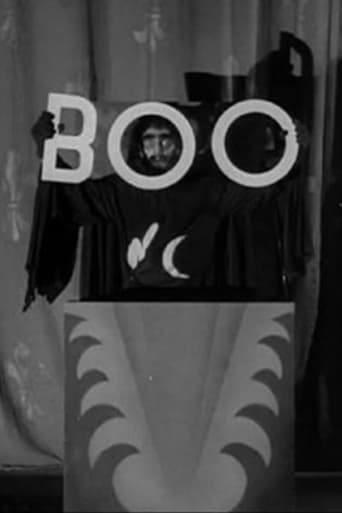

Stylish but barely mediocre overall
... View MoreThis is a small, humorous movie in some ways, but it has a huge heart. What a nice experience.
... View MoreIt is both painfully honest and laugh-out-loud funny at the same time.
... View MoreThere is, somehow, an interesting story here, as well as some good acting. There are also some good scenes
... View MoreTo say Boo! is an oddity is an understatement in itself. This is a perfect example of something that is so bad it is good as it pokes fun at Frankenstein and Dracula(Nosferatu). It is true that Boo! is cheesy and lame somewhat, the pacing is rather rushed, the editing dated and the reference to woman automobile drivers rather on the sexist side, not to mention the enthusiastic if rather overdone narration. Nonetheless, it is a curious watch for the final line "you can milk a cow but a lobster is very ticklish", the so-bad-it-was-funny type of jokes and the corny haunting music. Plus it was nice to see archive footage of Frankenstein(hooray for Karloff!) and Nosferatu. Overall, by all means worth watching, but not something I would recommend highly. 5/10 Bethany Cox
... View MoreI watched this short film on the special features of the Frankesntein legacy collection DVD and found it pretty darn hilarious. It's obviously nothing amazing or to write home about but I think you'll find it pretty entertaining if you're a fan of Nosferatu and Frankenstein. Don't take it too seriously.I thought the narrator was really funny and had some very clever lines. The clips from Frankenstein and Nosferatu are always great but with the commentary put over them, they were hilarious. Check this one out for a good laugh and I think you'll find yourself enjoying it for the most part. Not much else to say.
... View MoreAs time passes, it is easy to forget that films of the past were often accompanied by co-features, newsreels, cartoons and film shorts that added to the value of an evening out. Even if the main feature was a desultory effort, entertainment could be found within the accompanying program.Dating from 1932, Boo was a short film produced by Universal that used footage from their own Frankenstein adaption, as well as The Cat Creeps and the 1922 German version of Dracula entitled Nosferatu. With minimal new footage but clever editing, a modest yet enjoyable short was produced. Given that the film incorporates only around three minutes of new footage, production was likely limited to a single day.Clearly a product of its time (with brisk narration bemoaning the depression and Congress' failure to deal with it), this film was likely a tolerable indulgence for film goers of the time but has become an intriguing relic of its time for the modern viewer.On a side note, Nosferatu was ordered destroyed by Bram Stoker's widow shortly after its unauthorised production. Several prints survived and it is intriguing that a relatively clear one was available for the producers of Boo as early as 1932. With so much of film history prior to 1950 now lost to us, the survival of Boo and its public distribution with the Frankenstein DVD provide us with an item of historical and social interest. It provides an indication of how modest resources could be used to pad out a cinema program and perhaps more importantly shows the cultural impact of Frankenstein at that time. The monster was an easily recognisable figure already and would not have been included in the short had the public not been able to instantly identify him.Seeing a film like Boo is like opening a door to the past. Even after the door has closed the memories remain and new insight is gained by the viewer.
... View MoreYes, you read right. "BOO" (1932) is a delightfully _unfunny_ little movie. How is that possible? Well, the narration is really, painfully lame... so lame, in fact, that it had me laughing hysterically. The narrator is just so darned enthusiastic, so sure he's being delightful, that you have to marvel at his blissful ignorance. After I saw "BOO," I couldn't help but imitate him. ("He's just like Congress!" "He's like a female automobile driver!") Add to this the "wacky" editing tricks -- endlessly repeated -- and you have the recipe for comic perfection. I think if I had seen this when I was 8 years old, I might have thought it was just about the funniest thing in the world. Seeing it as an adult, the movie's UNFUNNINESS is itself funny. It seems like a contradiction in terms, but you'll understand when you see it. You should have the DVD of "Frankenstein" in your collection anyway. Universal's done a beautiful job with it.
... View More